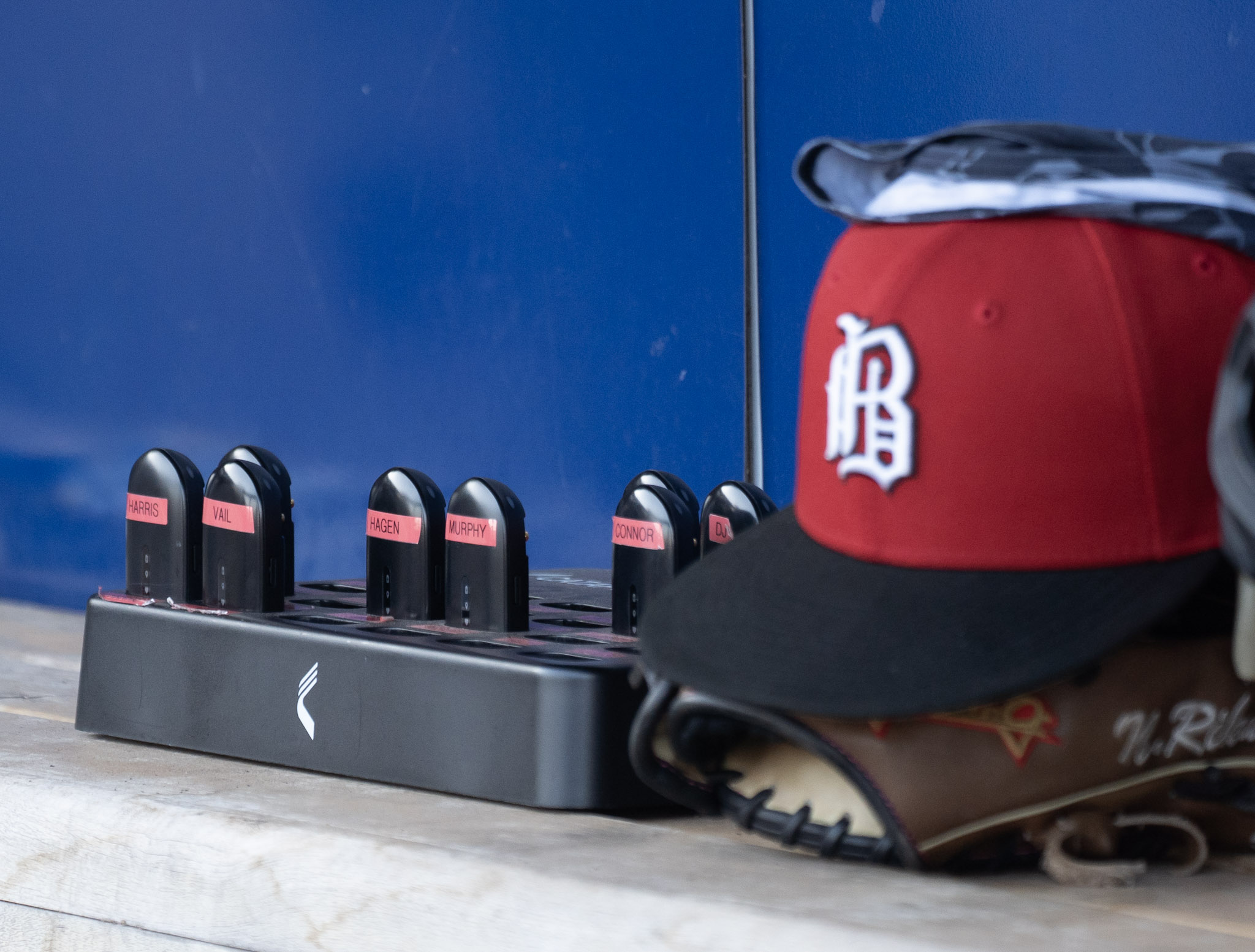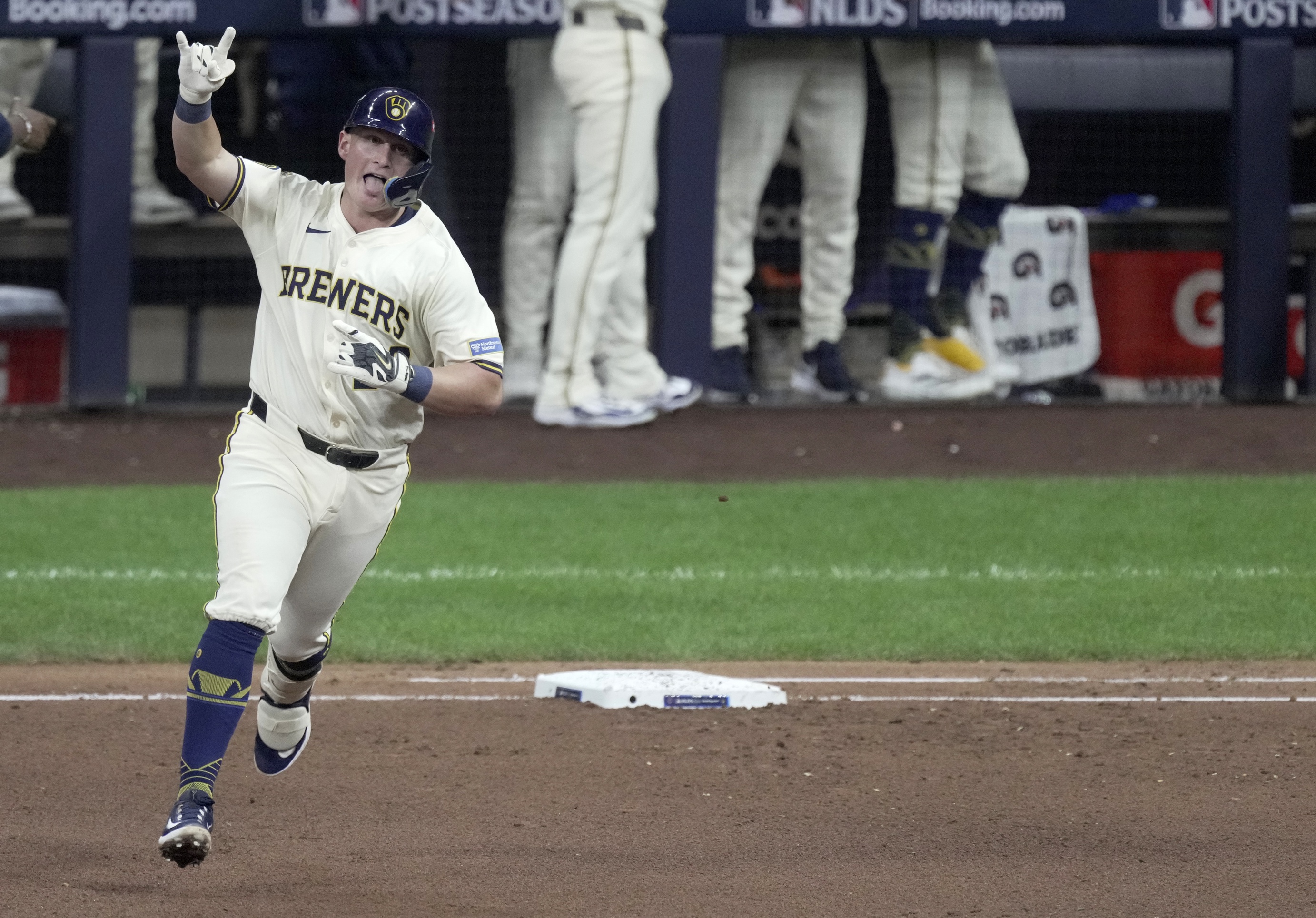Aside from throwing right-handed and displaying an unyielding commitment to the mustache, there's not much about Drew Thorpe that reminds one of Dylan Cease.
His fastball sits in the low-90s; Cease's in the high-90s. His slider is a work in progress; Cease's is one of the best in the game. His changeup is an out-and-out weapon; Cease's can only be used sparingly due to a 20-mph differential. Thorpe's arsenal is designed to end matchups early in counts; Cease is on track to strike out 200 hitters for the fourth consecutive season.
But for a while, Thorpe's performance was reminiscent of Cease, in that it generated a very specific streak that doesn't exactly roll off the tongue.
Thorpe was the first pitcher in White Sox history to throw four consecutive starts lasting at least six innings while allowing fewer than four hits and two runs ... and then he did it again against Kansas City in his first start after the All-Star break. It brought to mind Cease's run of 14 consecutive starts allowing fewer than two earned runs during his Cy Young runner-up campaign in 2022, which is what you want in a situation where Thorpe headlined the return for Cease in the White Sox's trade with the Padres back in March.
Cease doesn't seem like the type to keep tabs on what Thorpe is doing for motivation, but if you can pretend his last few weeks is a response to Thorpe's surge, it's almost like there's a Michael Jordan-grade vengeance engine under the hood.
Entering his final start of the first half, Cease's first season with the Padres generally fit his body of work with the White Sox. He once again led the league in starts, which allowed him to be at the top of the leaderboard in strikeouts. He had runs of dominance countered by starts where he got bogged down, resulting in an unremarkable ERA (4.21) that ran well above his FIP (3.36).
The biggest difference was that he dramatically slashed his walk rate. He only issued 33 over 109 innings, bringing it comfortably below 10 percent (7.5) for the first time in his career. Yet even that came with another true outcome attached, because he was allowing homers at a career-high rate, even though he plied his trade in pitcher-friendly Petco Park.
Cease remained a valuable pitcher, albeit one hard-pressed to replicate his past level of Cy Young consideration. Meanwhile, when you combine his MLB and minor league game logs, Thorpe has thrown 17 starts lasting at least six innings, and he still hasn't thrown 100 pitches in a game as a member of the White Sox organization. As long as you were comfortable ignoring a FIP disparity hovering around 1½ runs , you could lead yourself to believe that the White Sox just might've replaced Cease for the league minimum.
Then you look at Cease's last three starts, and that's when it's time to pump the brakes.
Cease threw a no-hitter against the Nationals on Thursday, and while facing one batter over the minimum is impressive in its own right, it's even more stunning when combining it with what he did the two starts prior:
| Date | OPP | IP | H | R | ER | BB | K |
|---|---|---|---|---|---|---|---|
| July 13 | ATL | 6 | 1 | 0 | 0 | 3 | 11 |
| July 20 | CLE | 7 | 1 | 0 | 0 | 1 | 10 |
| July 25 | WSN | 9 | 0 | 0 | 0 | 3 | 9 |
| Total | 22 | 2 | 0 | 0 | 7 | 30 |
Two hits and 30 strikeouts over 22 innings looks like something you only see in high school softball, and he's once again breaking new ground in stinginess. He's the only pitcher since 1901 to throw three consecutive starts of six innings without allowing multiple hits, and it makes Thorpe's fine rookie run look relatively quaint.
Comparisons to Cease aren't helpful to Thorpe, but they're unavoidable. They're also instructive at a time when the White Sox are rolling out one of the most impotent offenses in league history, and mulling returns Erick Fedde and Garrett Crochet before the trade deadline Tuesday (the latter of which became even more complicated because his representation's conditions for extending his usage are circulating even louder).
When the White Sox made their last set of rebuild trades, Rick Hahn dealt pitching for hitting and hitting for pitching, which made it a little harder to draw direct comparisons. Chris Sale's been better than Yoán Moncada since the trade, but Sale would've made a terrible third baseman on account on his left-handedness, so there's a degree of separation that reduces the intensity.
Chris Getz & Co. made their share of pitches for bat-fronted packages for Cease, but found the ceilings they were likely to get on the position side to be even more humble than Thorpe's. So pitching for pitching it was, and while the White Sox aimed to turn one arm into two (and maybe an outfielder), the more likely outcome is trading a good pitcher for a worse pitcher, but with perhaps a more helpful window of team control.
That's not nothing, but it's also mostly an accounting measure for a team that requires an overhaul of the entire business. The saying is that you can never have enough pitching, but for a team that finds a 3-0 deficit literally insurmountable, I'm comfortable saying that you can have a pointless amount of pitching, and that's where the White Sox are right now. Look at it this way: If Cease were still in Chicago, nine no-hit innings might only be good for a no-decision.
Postscript
I'm glad that Cease was able to complete a no-hitter, mostly because it absolves me of any guilt I'd feel for endorsing his decision to pitch to Luis Arraez with two outs in the ninth inning of his near-miss with the White Sox two years ago. Arraez and Cease are now teammates, and Arraez gave Cease the ball from the final out. Loose ends aren't tied up any more neatly than that. My conscience is clean.






